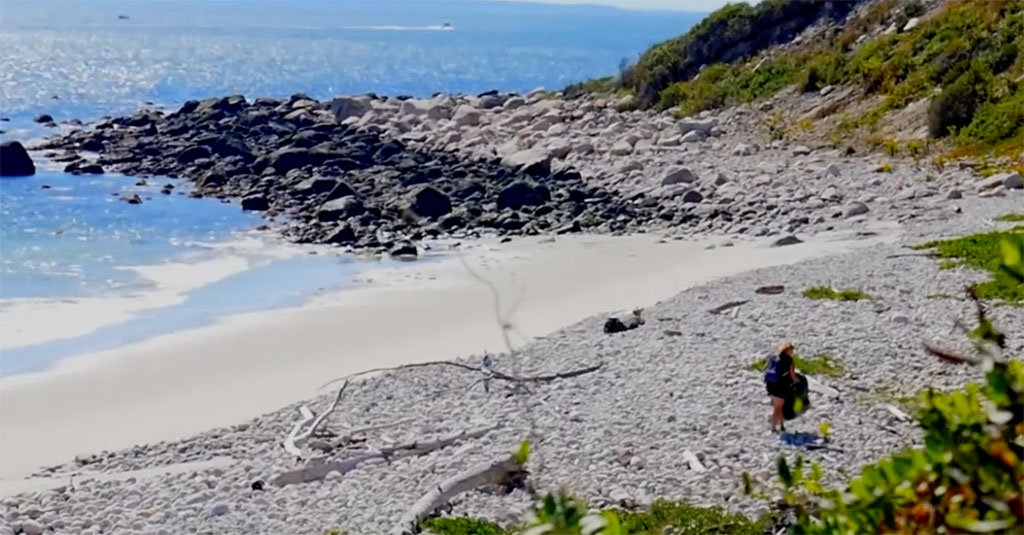 Michele Klimczak, FIConservancy’s Marine Debris Coordinator hauls debris from Fishers Island beach.
Michele Klimczak, FIConservancy’s Marine Debris Coordinator hauls debris from Fishers Island beach.
Fishers Island is being inundated with marine debris: we’ve cleared and hauled away over 10 tons in the past two years.
Michele Klimczak, FIConservancy’s Marine Debris Coordinator, has the monumental task of clearing this pollution year-round to help conserve our Island and protect our wildlife and community. But there’s still more shoreline to cover and more debris to collect.
We need your help! Do you have a favorite beach or a private beach that you are willing to clear of debris?
Join our effort by adopting a beach. Here’s how:
- Step 1: Sign up here!
- Step 2: Review our Beach Cleanup Safety Guidelines below, gather friends and family and head out to clear your beach.
- Step 3: Text Michele at 631-800-9394 whenever you have a full bag so she can collect the debris and snap a photo of your team with your haul.
- Step 4: Repeat steps 2 & 3 when you can.
Michele will then remove, weigh and sort the debris, properly disposing of anything that cannot be reused.
Your team’s photo, beach and weight of debris collected will be posted on FIConservancy’s social media (if you’d like) and will be included in our monthly website Marine Debris Cleanup report.
There will be prizes for the top three teams that collect the most marine debris throughout the summer.
We’re so grateful to Michele for her hard work and we thank you for your continued support. Together, we can help conserve Fishers Island and its waters.
IMPORTANT: Beach Cleanup Safety Guidelines
Rusted metal, hypodermic needles, glass and sharp plastic are commonly encountered during beach cleanup. The following guidelines should be followed to ensure safety.
What to bring:
- Large bags, preferably reusable, in which to place the debris
- A “sharps container” for items found such as needles, metal or glass
- A trash/debris nabber, if you have one
What to wear:
- Thick work gloves to protect your hands
- Fully enclosed, supportive shoes (no sandals or open-toed shoes)
- Long pants are preferable and don’t forget sunscreen, sunglasses and a hat
What to do:
- Bags should be carried an arm’s length from body for your safety
- Follow the steps listed above and have fun!